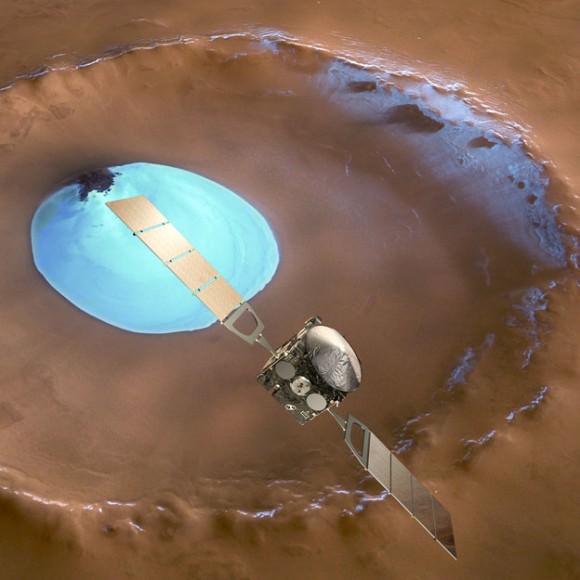Above is a time capsule of more than three billion years of Mars history. The right-hand side shows a bunch of blocky-looking things that formed after volcanic activity made the walls of Juventae Chasma collapse. In the center are what the European Space Agency calls "mystery mounds" made up of sulphate materials (indicating that they were changed by water a long time ago.)
"The mounds contain numerous layers that were most likely built up as lake-deposits during the Chasma's wet epoch. But ice-laden dust raining out from the atmosphere – a phenomenon observed at the poles of Mars – may also have contributed to the formation of the layers," ESA stated.
"While the water has long gone, wind erosion prevails, etching grooves into the exposed surfaces of the mounds and whipping up the surrounding dust into ripples."
The picture was snapped Nov. 4 by the European Space Agency's Mars Express mission. There's been a lot of talk about water on Mars this past week, between this
possible salty water find
at the equator and news of the Mars Curiosity rover stumbling on to an
ancient lake that could have supported life
.
Mars Express has been humming along for 10 years and counting above the Red Planet. Check out
some of its top discoveries in the past decade
in this past article by Universe Today's Ken Kremer.
[caption id="attachment_102768" align="alignnone" width="580"]
This artist's concept shows Mars Express set against a 35 km-wide crater in the Vastitas Borealis region of Mars at approximately 70.5°N / 103°E. The crater contains a permanent patch of water-ice that likely sits upon a dune field – some of the dunes are exposed towards the top left in this image. Copyright ESA/DLR/FU-Berlin-G.Neukum[/caption]
 Universe Today
Universe Today

